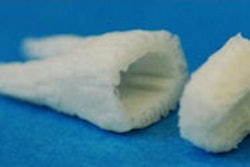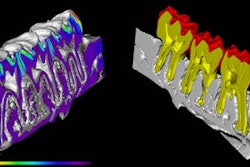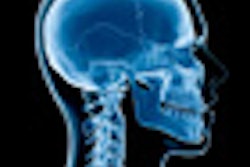Topical application of the growth factor fibroblast growth factor-2 (FGF-2) enhances the regeneration of human periodontal tissue in patients with periodontitis, according to researchers from Osaka University Graduate School of Dentistry (Journal of Dental Research [JDR], November 8, 2010).
It is well known that oral infection progressively destroys periodontal tissues and is the leading cause of tooth loss in adults. A major goal of periodontal treatment is regeneration of the tissues lost to periodontitis. Unfortunately, most current therapies cannot predictably promote repair of tooth-supporting defects.
This challenge led M. Kitamura and colleagues to conduct a human clinical trial to determine the safety and effectiveness of FGF-2 for clinical application. It is the largest study to date in the field of periodontal regenerative therapy, according to the International Association for Dental Research, which publishes the JDR.
The researchers conducted a randomized, double-masked, placebo-controlled clinical trial in 253 adults with periodontitis. Periodontal surgery was performed, during which one of three different doses of FGF-2 was randomly administered to localized bone defects. Each dose of FGF-2 showed significant superiority over the standard of care (vehicle alone, p < 0.01) for the percentage of bone fill at 36 weeks after administration, and the percentage peaked in the mid-dose FGF-2 group.
"These results strongly support the topical application of FGF-2 can be efficacious in the regeneration of human periodontal tissue that has been destroyed by periodontitis," the researchers concluded.
This study represents the largest multicenter human clinical trial using growth factor therapy to repair tooth-supporting osseous defects, noted JDR Editor-in-Chief William Giannobile, DDS, MS, DMSc, in a press release. "The tissue engineering technology has important ramifications in the treating of localized bone defects around teeth resulting from periodontal disease," he said.
In an accompanying editorial (November 1, 2010), Martha Somerman, DDS, PhD, dean of the University of Washington School of Dentistry in Seattle states "for periodontal regeneration to continue as an attractive approach for restoring tissues lost to disease versus the choice for extraction and implant placement, we must focus our efforts on developing predictable therapies that include substantial restoration of tissues to physiological health with positive outcomes over the long term (e.g., greater than 10 years), as well as containing costs for our patients."
Copyright © 2010 DrBicuspid.com



















